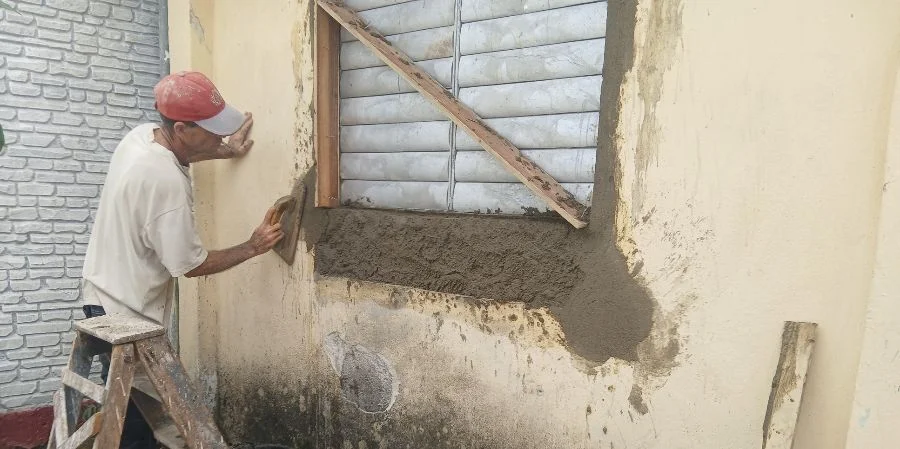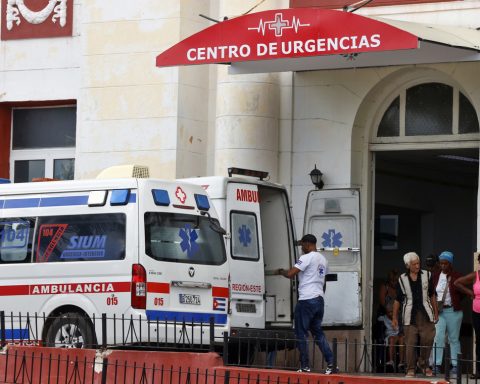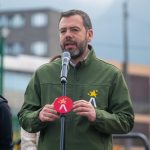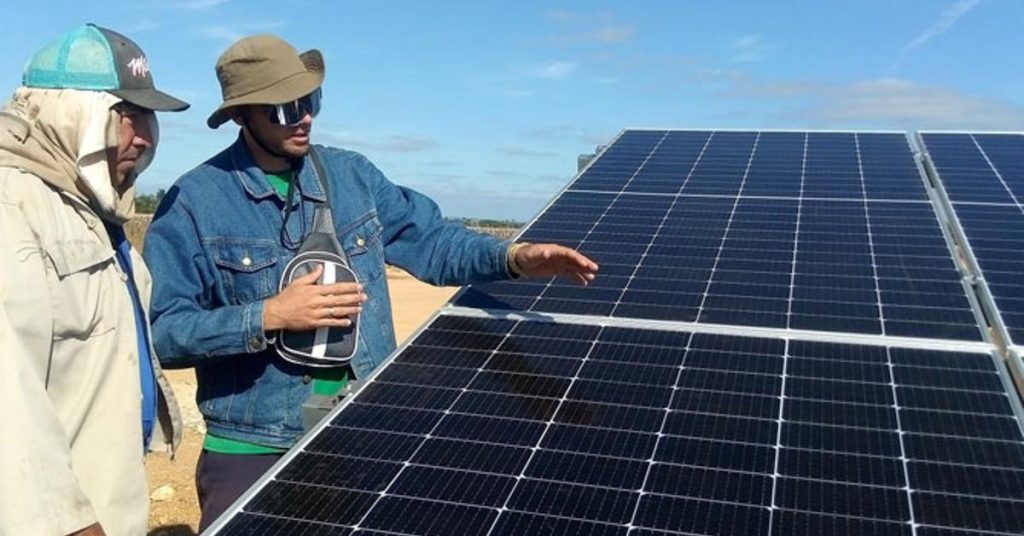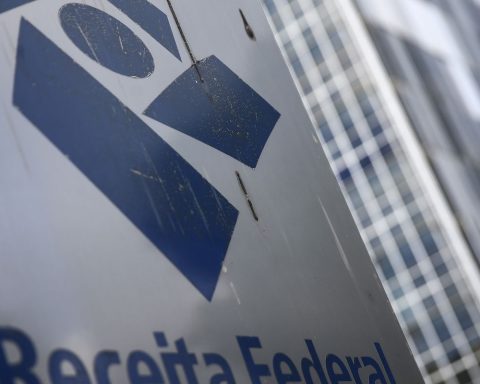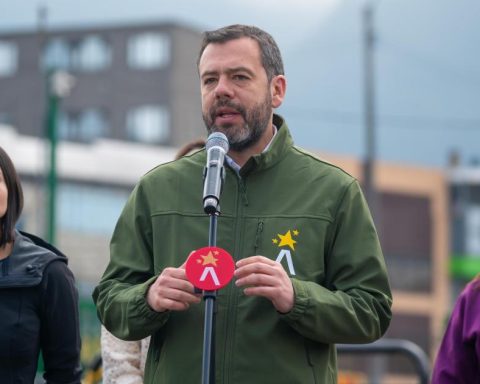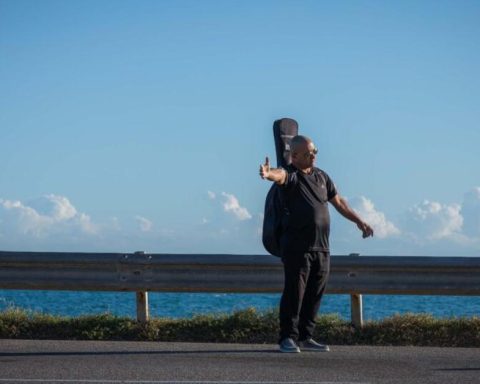SANTA CLARA, Cuba. – Three years ago, when Rosaura Mendoza’s son left Cuba for the United States, via Nicaragua, he assured his mother that he would be able to raise enough money to repair a small house purchased on the outskirts of Santa Clara. The one they previously occupied had to be sold to pay off the debts of the trip, the ticket, and pay for the new home, much narrower and with serious construction problems.
To date, this retiree estimates that she invested more than $2,000 in trifles such as raising an intermediate wall between the improvised room and the kitchen, placing an elevated water tank, and covering the plateau. “If I start calculating for a little more money, I would already have an apartment near the hospitals, which they are almost giving away. Getting into repairing a house in Cuba is like throwing stones at a honeycomb: you start with one problem and ten more appear.”
The possibility of the free visa granted by Nicaragua at the end of 2021 stimulated the sale of homes on the Island like never before. Although at that time some of these properties were released on the market, gradually the sellers were forced to reduce their value, and even offer them with additional features such as furniture or household appliances.
Despite the obvious devaluation of real estate, some Cubans choose to repair, remodel or reconstruct theirs and then sell them at a better price or rent the space to private businesses. In this case is Rosaura, who due to health problems had to move in with a niece and now rents her room to two mechanics from motorines. “It’s not enough to keep throwing money at an old woman with rouge,” he sums up.
According to official figures from a year and a half agomore than 800,000 homes in Cuba are in fair or poor condition and need to be rebuilt or maintained. However, the calculation is quite conservative taking into account the situation of real estate deterioration that is observed not only in peripheral areas, but also in provincial capital cities.
A walk through the most central streets of any Cuban city, municipality or rural town is enough to notice the large number of half-(re)constructed houses whose works have been paralyzed for years. In many of them, families of several members who share a room usually reside, with no other possible remedy, waiting for providence to help them become independent. Other homes, however, stand out for their diverse mix of architectural styles, some built in a short time, and with a waste of materials that appear “by magic.”
Meanwhile, Yankiel, a resident of the Capiro neighborhood of Santa Clara, has been trying for months to “give shape” to a comfort room located in the backyard of his mother-in-law’s house, where he lives with his wife and his two youngest daughters. age. When you manage to convert it into a living space, you will have to start the tedious paperwork to have it recognized as a legal home, with the right to an independent electric meter.
“There is a saying that he who marries, wants a house,” he points out. “I started by putting up walls and putting a Venezuelan zinc roof, but it was left without plaster, because I couldn’t pay for the cement with my driver’s salary. We requested a loan from the bank, and we only had the money to start. To apply for a subsidy, we would have to have another child, imagine. I want to get together to have at least one decent bathroom before the girl’s 15th birthday arrives.”
In 2021, the Cuban authorities announced in the Official Gazette (ordinary number 57) new rules for granting subsidies to natural persons without economic solvency who need to carry out constructive actions. This document also included the rules for financing mothers, fathers or legal guardians who have three or more minor children in their custody and care.
Many people who have received the aforementioned subsidy allege that after the bureaucracy involved in obtaining it, with money in hand, the materials are almost always missing at the points of sale known as “rastros” or they cost much more than the defined amounts, due to the high inflation rate of more than three years ago to date. On the other hand, those who do not apply for the above or for bank loans must be content with undertaking construction by “own effort,” which basically translates into “make do as you can.”
Cement, brick, sand… and a sack of money
A good part of the inputs that are sold “on the left” in the informal market are stolen from state works or resold by those who receive them at subsidized prices, according to Javier, a consulted bricklayer known by the nickname “El Fast”. “The most expensive thing is to throw away a plaque. That does come out hot. For a house with a few rooms it should be easy to set up in half a million pesos,” he deduces. “People roof them with zinc or fibro, but when a cyclone comes, you know…”
Cuban bricklayers they charge their work depending on each unit placed or surface completed. For example, the rate established by Javier for creating a space with a thousand blocks is approximately 35,000 pesos. Meanwhile, veneer for bathrooms and kitchens costs about 2,000 per square meter. “Between the materials and the labor, you really need a lot of money,” acknowledges this bricklayer, who also illustrates that many people are forced to live for years in unfinished rooms because they do not have enough funds to put a floor or patch walls.

Via Messenger, a construction materials seller, who proposes his offers in Revolico Santa Clara, breaks down the price of the materials: blocks at 250 pesos each, bricks at 80 and the meter of Creole slab at 4,000. Bags of P350 cement, which is used for most foundries, cost 10,000 pesos or more in the informal market. If we take into account the size of a simple four-by-four room, finishing it would be equivalent to a few thousand CUP.
In tourist areas like Matanzas or Trinidad the prices are much more exclusive. Beatriz, her husband and their three children, residents of this last city in Sancti Spiritus, had to “become independent” due to family conflicts and decided to repair a small wooden house that a friend gave them. Six years after starting the work, they have not yet been able to lay a floor, plaster the bricks or install water from the aqueduct.
“It has been an ordeal, we stopped buying clothes and shoes, we ate peeled rice to save the main course for the children,” laments this young 23-year-old mother. “There have been years of sacrifice, sleeping among cement, hills of gravel and sand so that the floods would not carry it away.” [inundaciones]. When you build you live in constant stress, of gathering kilo by kilo, or having inspectors come to ask you where you got this or more that thing from.”
Given the critical situation with construction materials, some people usually go at night to areas where buildings are disused, collapsed or in poor condition to steal the blocks, bricks and especially the rebar, another of the inputs. more expensive and necessary for any work. In her conversation, Beatriz recalls a scene from the Cuban film The horn of plenty in which the main character steals bricks to be able to finish a room in his home: “I can relate, because we had to do it too. We went out through the streets looking everywhere to see what little piece of old brick we could pick up from a planter.”
